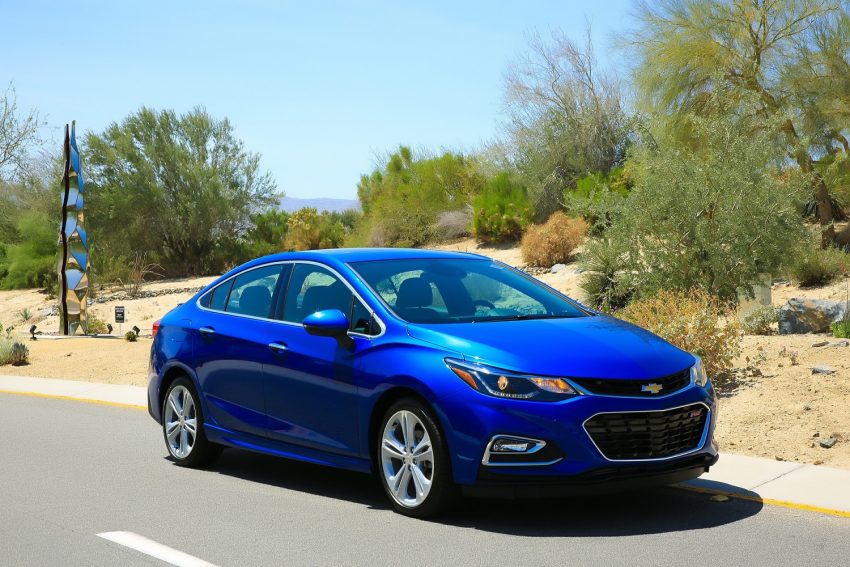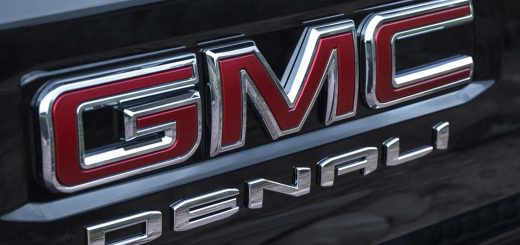Platform sharing has been around since some of the earliest days of automobiles. Different vehicles used a common architecture, spawning a plethora of variants. However, General Motors got lazy, admittedly, and platform sharing quickly turned into “badge engineering.”
By badge engineering, we mean one platform and vehicle spread through a multitude of brands. We won’t name examples, you know them *cough, Cavalier-Cimarron, cough*.
However, as Automotive News reports, badge engineering is dead. Long live platform sharing. As GM begins to get out of its own way, it’s utilizing its scale and engineering prowess better than ever to create true global platforms, and global vehicles.
GM named the first-generation Chevrolet Cruze its first true global car, but GM product chief, Mark Reuss, recalls it a bit differently.
“The first Cruze was global — kinda,” he said. The original Delta platform was engineered in Europe for Opel and Chevrolet compact vehicles, but by the time U.S. engineers were finished with the Cruze, it was a completely different car. A torsion beam was added for handling and a larger 1.8-liter four-cylinder found its way under the hood, which added unnecessary weight.
The 2016 Chevrolet Cruze, the second generation of the car, is a different story. It rides on D2XX, sharing exact bones with the Opel Astra K. The platform is being launched, and can launch, around the world with very moderate tweaks for consumer tastes.
The D2XX platform will underpin as many as 2.5 million of GM’s vehicles annually, up from around 1.5 million for the outgoing Delta platform. That’s because compact cars aren’t the only piece to the platform-sharing puzzle, crossovers are, too. The next GMC Terrain and Chevrolet Equinox will also use D2XX, and a Cadillac may even find its way atop the platform as well.
And D2XX isn’t the only platform, either. C1XX will spawn midsize crossovers, E2XX will give life to new midsize sedans, plus more. GM has been playing catch up for years, but it’s finally beginning to close the gap.















Comments
It’s all about how a platform and chassis is engineered! Most people have no problem with vehicles sharing the same platforms, but if a company fails to create a totally different vehicle from an existing platform, then they have failed! Thus, badge-engineering ensues! Some companies are better at it than others….
Should GM go ahead and produce a D2XX vehicle, this is what they’ll have to prove if they’re going to be successful! The newest Cruze is an excellent car in its segment! The supposed D2XX Cadillac has to “dare greatly” to be as different as possible!! Drawing very little comparisons to the Chevy counterpart! Being far more than just a luxurious alternative! That’s part of the reason why the ELR suffered: Cadillac engineers failed to differentiate further from the Volt, which had all the essential features of the ELR minus the $75K pricetag!!!
Automotive engineering has come a long way and sharing the same platform doesn’t mean what it did of yesteryear with multiple cars looking alike because General Motors’ Alpha platform is used by Cadillac’s ATS and CTS as well as Chevrolet’s Camaro; thus, if Cadillac decided to use the D2XX platform of the Chevrolet Cruze, the Cadillac vehicle could look as different as the CTS and the Camaro.
Everyone platform shares anymore and they have to due to the economics.
But today with better computer engineering and other abilities to make these platforms much more flexible it is easy to base very distinct cars off of them.
Being able to move hard points more to make longer, shorter wider and narrow cars make this much easier task. They are no longer just the same car with a different body as they used to be. The Alpha bears proof of that and GM will only expand on this.
We will see more flexibility in all future platforms.
Sharing platforms never bothered me one bit, most don’t even know or don’t care!
I understand that these brands sit underneath GM but why can’t Buick and Cadillac produce cars in the same space. GM is the only company currently that still looks at one brand to see if they can produce for another brand. VW and Audi sell similar cars that both sell, maybe I’m upset about the Avista and Avenir being shot down by Cadillac but I think Buick should be able to use any platform and if it sells better than the Caddie, maybe Caddie should go back to the drawing board.
In addition to platform sharing, GM has also done powertrain sharing, such that one line willl have engines and transmissions made for another. My favorite case was the Buick engines in Oldsmobile cars (I had one). Now Gm is sharing the Voltec powertrain among other models and lines, such as the 2016 Chevy Malibu Hybrid and the 2017 Buick LaCrosse Hybrid. I expect to see more electric and hybrid powertrains among more models and across all GM lines.
It still puzzles me why the new Cruze from North America and China are totally different, not even sharing the same wheelbase.
Does anyone know what platform some of the GM China Baojun models are based off?
Likewise the Buick Envision is supposed to be based off the D2XX but has an independent rear suspension rather than the compound crank torque beam. It also has a mid-mounted fuel tank. As such about the only portion of the D2XX platform it is likely to have is from the A-pillar forward.
Now there is mention of the C1XX for mid-size crossovers. Sounds to me that this is a better classification for the Envision.